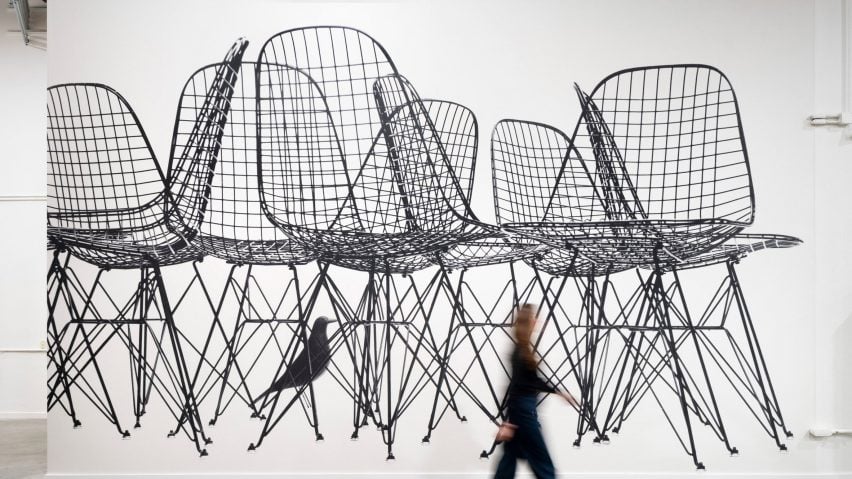Mid-century modern furniture design endures because it is the "peak" of American furniture design says author Cara Greenberg, whose book popularised the term, in this interview for our mid-century modern series.
"Every 30 years, styles are rediscovered," Greenberg told Dezeen. "But each generation that I've observed that comes up since I wrote the book catches on to it at some point when they're furnishing homes."
"So at this point, it's classic – and it's never going away," she added.
It was in 1984 that Greenberg wrote a book called Mid-Century Modern: Furniture of the 1950's. Though the term may have previously been used to describe furniture created between 1947 and 1957, she has said that her book popularised it and that she was not aware of the term's use when she and her editor titled it.
The book was rolled out of an article called Fifties Furniture she wrote in 1983 for the now-defunct magazine Metropolitan Home. Greenberg spent months talking to mid-century modern designers for the book – such as Ray Eames – and sifting through the archives of design museums and furniture brands.
A decade later, the antique market for furniture was booming, and legacy brands such as Herman Miller and Knoll began to re-release the furniture based on trends driven by books like Greenberg's.
The peak of American furniture design
She cited the late 1990s and early 2000s, when brands like Design Within Reach and 1stDibs came onto the market, as a peak for the trend, but doesn’t see it going anywhere.
"I don't see it as a style that has peaks and valleys," she said. "I see it as iconic design. I think it was actually the peak of American furniture design – I'm not sure about in other countries, but I think the 1950s were the absolute pinnacle of American furniture design, and we've never bested it."
"So people keep rediscovering it as they come of age and are furnishing their homes," Greenberg added.
"There have been so many surges within the overall juggernaut that began 40 or so years ago with the publication of my book if I say so myself."
"Purity of design" keeps it relevant
However, even though the media, then and now, has driven the trend, Greenberg argues that certain qualities of the design are what keeps it in style.
"I think it is the beauty and the purity of the design," she said. "The sculptural qualities, the functionality of it, the fact that it's lightweight."
"The Eames office chairs and dining chairs are still great," she added. "The coffee tables are still really cool. The Noguchi coffee table is such a cliche, but it's not going away."
Since releasing Mid-Century Modern: Furniture of the 1950's, Greenberg has gone on to write about a number of topics.
And though she said she has "gotten very tired" of constantly seeing the style she had written about and hearing about the resurgence of the term mid-century modern, she is impressed by how, with the Internet, new designs and variations of the style are still coming to light.
Greenberg still considers the book a success and said that she "commandeered" the topic for a period during the 25 years when the book was in print.
"My claim to fame is something I did when I was 33 years old, and now I’m 74; it does seem to have stuck to me," she said.
However, she concludes that since bringing the term to a broader public, she has moved on.
"I'm certainly not a leading expert on the subject anymore, because I've gone on to write about so many different things," Greenberg concluded.
Mid-century modern
This article is part of Dezeen's mid-century modern design series, which looks at the enduring presence of mid-century modern design, profiles its most iconic architects and designers, and explores how the style is developing in the 21st century.
This series was created in partnership with Made – a UK furniture retailer that aims to bring aspirational design at affordable prices, with a goal to make every home as original as the people inside it. Elevate the everyday with collections that are made to last, available to shop now at made.com.

